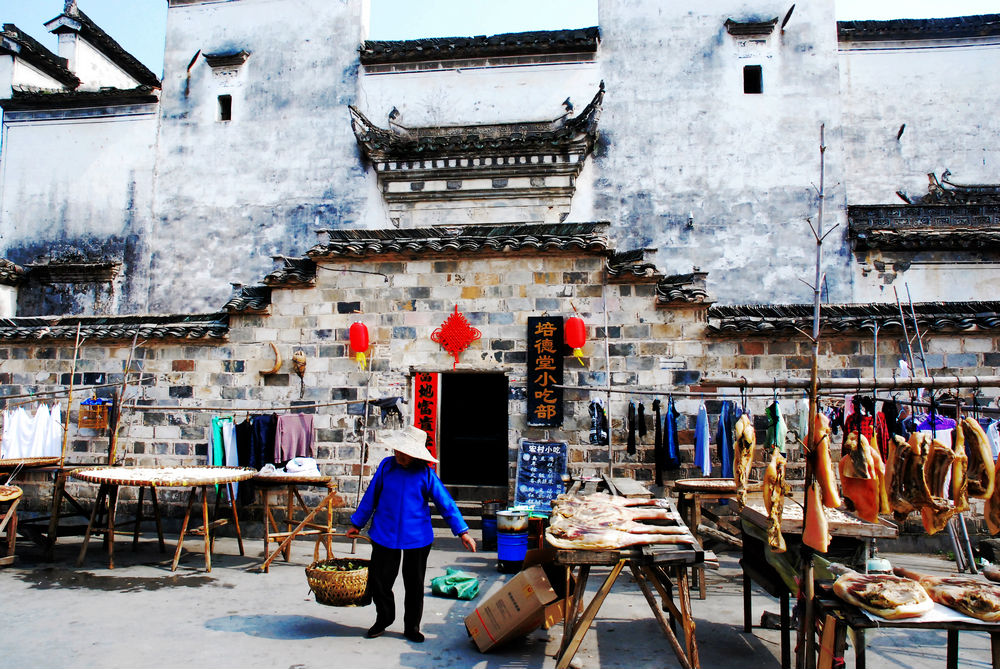Digitization protects ancient towns

Hongcun, listed in the Chinese Historical and Cultural Towns and Villages Directory, is an ancient village located in southern Anhui Province.
Ancient towns along the shores of Taihu Lake and historic villages in southern Anhui Province are among China’s many ancient villages and towns that have existed for thousands of years. As still-living relics, they showcase traditional history and culture that are unique to the regions they belong to. In recent years, digitized technologies have been widely applied to protecting cultural relics. Preservation of these ancient villages and towns has been enhanced by the combination of science and art.
Digitization
The Chinese Historical and Cultural Towns and Villages Directory contains 528 villages. Ruan Yisan, dean of the Studies Center for State-List Famous Historical and Culture Cities at Tongji University, said that architecture contains many useful details about ancient cultures.
Renovation and consolidation can extend the life span of villages of historical significance. The moderate number of people allowed living here are also responsible for their maintainance. As brick-and-wood constructions, these pieces of architecture are bound to suffer from natural deterioration. Therefore, in addition to physical protection, digital technology offers new ways to preserve the historic, architectural, artistic and folk values retained in these ancient towns.
Wang Xinyuan, a research fellow from the Institute of Remote Sensing and Digital Earth at the Chinese Academy of Sciences, said that digital technology provides more advanced physical protection. For example, it can detect potential risks to the structure more accurately. In addition, modern technology puts the architecture and surrounding environment in data form, while reconstructing and storing information digitally, so that it can be preserved forever.
Liu Peilin, dean of the Cooperative Innovation Center for Digitzation of Cultural Heritage in Ancient Villages and Towns, said that compared with traditional theories and measures, digitized protection enhances protection quality in four aspects. First, it records original data in a more precise way, and ensures that the data will not be affected by natural changes. Second, it can comprehensively record historical and cultural information, while making sure that these records will not change with time. Third, digitized information fuels dissemination and network-based demonstration of the architecture and visual tourism. Last but not least, databases can assist in the management of these villages.
Measures
Digitized protection of historic cultural relics in China is just a beginning. There is also ongoing research on the Murals of the Mogao Grottos and other various examples of intangible heritage and tourist sites.
As deputy dean of the International Centre on Space Technologies for Natural and Cultural Heritage under the auspices of UNESCO, Wang worked with his research team and published the Atlas of Remote Sensing on Chinese Cultural Heritage after collecting remote sensing data of different resolutions and of various periods.
Wang said digitized measures that are widely applied to the protection of ancient villages include remote-sensing photography, stereo imaging, digital mapping techniques, terrestrial laser radar three-dimensional scanning and reconstruction technology, virtual reality technology, and technologies related to the protection of architecture.
Interdisciplinary effect
However, in the realm of digitized protection of cultural relics, there is a gap between expressive techniques and cultural connotations. In other words, technicians might know little about the connotations of various cultures. Wang emphasized that digitized protection is more than data collection. It also includes investigating the interactions between architecture and the environment.
Ruan said that preservation of these villages would be worthless if research on such cultural factors as local history and economy were neglected. Wang said he felt this way during fieldwork in the villages of Youcangpo, Yantou and Furong, all of which are near the Nancijiang River, Zhejiang Province. He said that those ancient villages had good locations, foresight, proper designs and sophisticated layouts. He said that preservation efforts should not be limited to protecting architecture, but systematic protection of buildings and their environments, in order to best retain the spiritual beauty and educational enlightenment these ancient towns meant to convey.
Considering that this endeavor requires cooperation between technology and culture, Liu suggested developing related interdisciplinary research. An expert team is also needed to investigate the nearly 530 state-listed famous ancient towns as well as more than 2,500 traditional villages.
Zhang Qingli is a reporter at the Chinese Social Sciences Today.

 PRINT
PRINT CLOSE
CLOSE